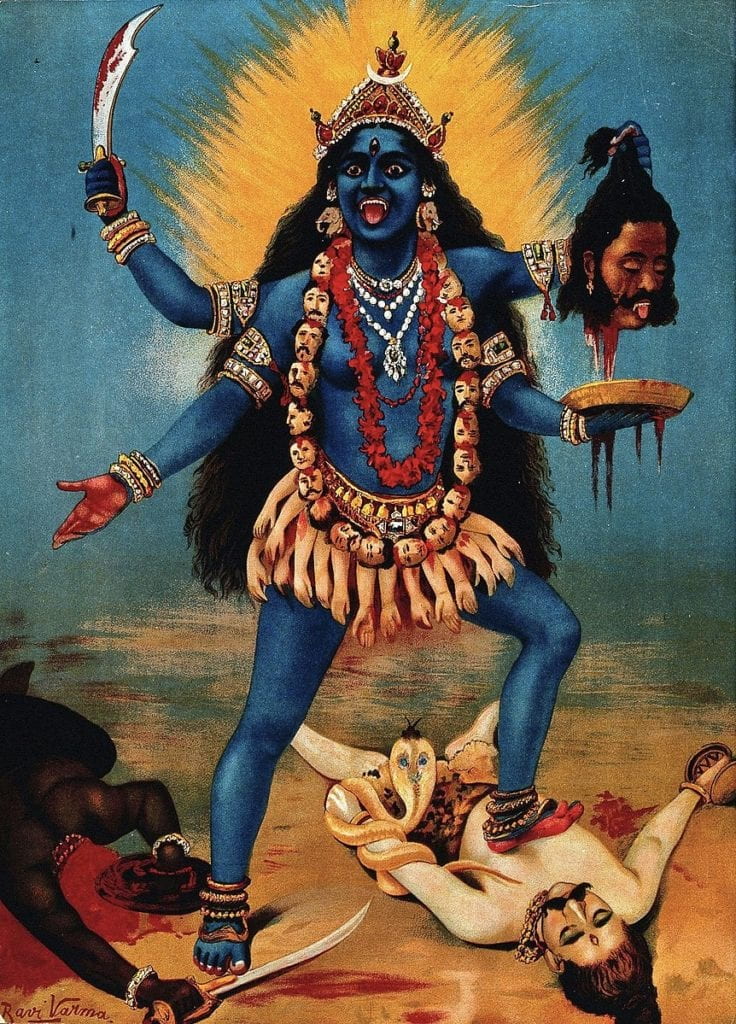Ayman Mukerji Househam
Sakhi
USA
The issue of domestic violence exists in all cultures. As a Hindu woman of South Asian origin, I have always been curious to find the Hindu mythological roots of domestic violence in my country. I am hopeful that by digging deeper, perhaps we will find an answer to the question, “How can we end domestic violence in South Asian communities?”
Mythological Hindu female characters such as Sita and Savitri may date as far back as the seventh century BC or even earlier. These characters were and perhaps are still considered traditional female role models, due to their chastity and devotion to their husbands. Interestingly, during the seventh century BC, the Indian subcontinent occupied most, if not all, of present-day South Asia. The South Asian woman traditionally honored by the society is the caregiver devoted to her husband in silence, subjugation, and tolerance, akin to the glorified religious and mythological characters. Such social values may leave the question of intentionality in creating a social order, perhaps to support a traditional gender hierarchy. A woman’s position in the hierarchy of Indian society can be traced as far back as 1500 BC, when Manu, the ancient Indian sage, prescribed unmitigated subservience of women to men in his code of laws known as Manusmriti.
While Sita and Savitri are often considered role models for Indian women, Hindus worship goddesses such as Kali and Durga, who represent stri-shakti (or woman power) in the form of fierce warriors. Devi Mahatmya (Sanskrit for “Glory of the Goddess”) is an ancient Indian text that was composed in Sanskrit around 400-600 CE. Rita M. Gross (2009) shares the accounts of Indian men marveling at the stories of the powerful warrior goddesses. This seems contradictory to the prevalent cultural models of female meekness, subordination, and obedience in the Sita-Savitri paradigm.
Perhaps this incongruity in the Indian patriarchy could be explained as a community where there is a distinction between authority, which is held by men, and power, which both men and women maintain. The Indian woman therefore takes control of situations–within the allowed societal constraints–that matter the most to her, often with a goddess as her patron.
An alternate explanation of this apparent contradiction between the ancient matriarchal mythological and the contemporary patriarchal societal beliefs is the “deprivation theory” suggested by I.M. Lewis (1971), wherein the losing status of the Indian woman is compensated by a consolation prize of her mythological prowess. Collins (2000) takes a more balanced view of the ambivalent role of the Indian female by referring back to the Indian philosophical text, Samkhya, written in the seventh century BC. The Samkhya distinguishes between the self or purusha (literally, “male”) and the prakriti or the nuanced feminine world of psychoid matters. The Samkhya describes a dualistic societal role for prakriti: that of a submissive wife and one who liberates purusha by challenging his ego.
Collins’ (2000) interpretation of the Indian philosophical and mythological views may present us with the underlying dilemma that still persists in the South Asian society: the role of a woman as a powerful necessity for a man to reach his full potential.
In conclusion, the mythology of patriarchy in South Asian countries is a curious study of contrasts between the fierce goddess and the submissive goddess; between the ideology of a powerful goddess and the practical convenience of the care-giving wife; between power and authority, and so on. With the inherent cultural complexity of this region comes a very complex origin of domestic violence. While this deeper dive did not really give me a solution to the ages-old problem, it did help me understand part of the deep roots of the issue.

References:
Gross, R. M. (2009). A garland of feminist reflections: forty years of religious exploration. Univ. of California Press.
Lewis IM. (1971). Ecstatic religion: An anthropological study of spirit possession and shamanism. Penguin (Non-Classics).
Collins A. (2000). Dancing with Prakriti: The Samkhyan Goddess as Pativrata and Guru. “Is the Goddess a Feminist?: The Politics of South Asian Goddesses,” 2000:52-67.